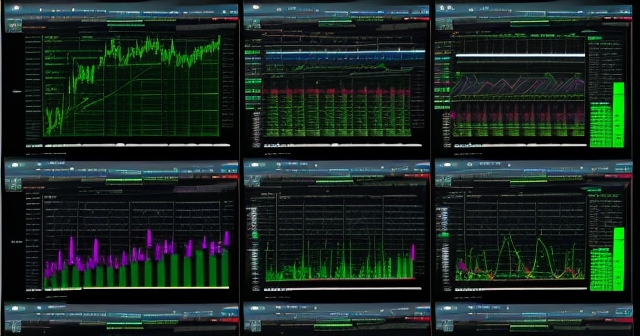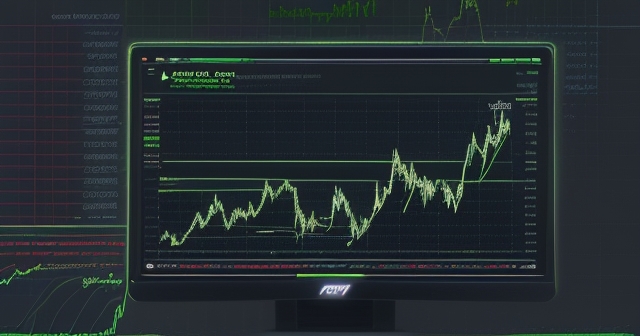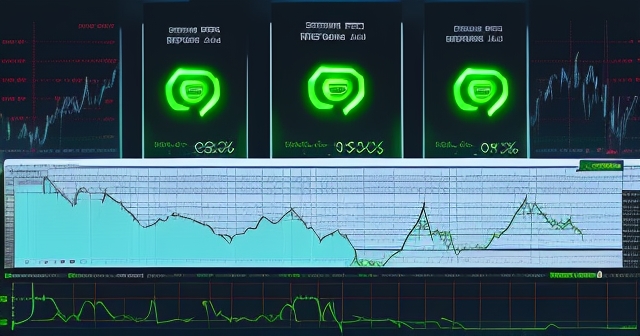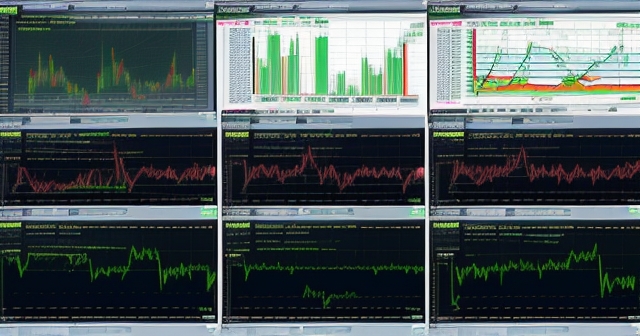
NVDA Resistance: Can NVIDIA Break Through $153?
Table of Contents
ToggleNVDA Stock at the Crossroads: Navigating Critical Resistance Levels and Bullish Momentum
Welcome back to our exploration of market dynamics. Today, we’re turning our attention to a stock that has captured significant investor interest: NVIDIA (NVDA). If you’re new to investing or looking to sharpen your technical analysis skills, NVDA offers a fascinating case study in understanding how powerful fundamental drivers intersect with crucial technical price levels. As of our analysis on June 9, 2025, NVDA stock is trading at a robust $141.72, maintaining a strong bullish trend that has seen its shares climb nearly 45% in just the past two months. This impressive rally brings us to a pivotal point, as the stock now sits near significant resistance.
Understanding resistance levels is fundamental to technical analysis. Think of resistance as a ceiling – a price point where selling pressure has historically emerged, potentially halting or slowing down an upward price move. For a stock in a strong uptrend like NVDA, successfully breaking through these ceilings can signal further upside potential, while failure to do so might lead to consolidation or a temporary pullback. We’re going to dissect the technical landscape for NVDA, examining where these critical resistance levels lie, how current indicators are signaling, and what underlying factors could influence the stock’s next major move. Are you ready to explore what the charts and fundamentals are telling us?

Before diving into the specifics, here are some key points to remember about resistance levels:
- Resistance levels act as overhead barriers where selling pressure frequently arises.
- Breaking these levels indicates a strong bullish sentiment, potentially leading to further price rises.
- Failing to break resistance may lead to price consolidation or declines.
The Foundation of Strength: NVDA’s Current Technical Posture
Before we pinpoint the resistance levels, let’s acknowledge the undeniable strength of the current trend. NVDA shares are not just moving up; they are in a confirmed, powerful uptrend. This is clearly visible when looking at the stock’s position relative to its key moving averages. The price is comfortably trading above its 20-day moving average (MA), which is currently located around $136. This shorter-term MA acts as immediate dynamic support; think of it as the floor closest to the price action. A healthy uptrend often rides along or just above its 20-day MA, showing consistent buying interest.
Looking at the longer term, the stock is also well above its 50-day moving average, sitting near $125, and significantly above its 200-day moving average, which is down near $96. The fact that the shorter-term MAs (20-day, 50-day) are positioned above the longer-term MA (200-day) with all of them sloping upwards is the textbook definition of a strong bullish trend. This alignment of moving averages confirms that the buying momentum has been sustained over various timeframes. Technical indicators like the Moving Average Convergence Divergence (MACD) also support this bullish narrative, typically showing its signal line above the MACD line and both above the zero line in a strong uptrend, indicating positive momentum.
| Moving Average | Current Price |
|---|---|
| 20-day MA | $136 |
| 50-day MA | $125 |
| 200-day MA | $96 |
Identifying Immediate and Key Resistance Levels
As NVDA ascends, it encounters price levels where previous rallies stalled or where a concentration of sellers might be waiting. These are our resistance zones. Based on recent price action, NVDA is currently testing a level of resistance around $141.50. This is an immediate hurdle, a point where we might see some intraday or short-term selling pressure emerge. However, the more significant level that investors and traders are closely watching is located at $153.

Why is $153 so critical? Technical analysts often identify historical price highs or levels where the price reversed significantly in the past as key resistance. While specific historical data points feeding into this $153 level are not explicitly detailed in our immediate data snapshot, it’s flagged as a key resistance level. This suggests it represents a significant psychological barrier or a level where substantial supply (sell orders) is anticipated to enter the market. Breaking this level would likely require considerable buying conviction and volume. Think of it as the main ‘ceiling’ that the price needs to decisively punch through to continue its major ascent.
The Significance of $153: More Than Just a Number
A key resistance level like $153 isn’t just an arbitrary point on the chart. It often represents a battleground between bulls and bears. Bulls, wanting the price to go higher, will attempt to push through this level, absorbing any selling pressure. Bears, believing the stock is overvalued or due for a correction, will likely concentrate their selling efforts at or near this price, attempting to defend the ceiling and push the price back down. The outcome of this battle at $153 will likely dictate the next major move for NVDA shares.
Technical indicators also provide context when approaching such levels. While the trend is strong and MAs are bullish, the Relative Strength Index (RSI), a momentum oscillator that measures the speed and change of price movements, is currently sitting around 68. The RSI scale goes from 0 to 100, and a reading above 70 is typically considered “overbought,” suggesting the price has risen rapidly and might be due for a pause or pullback. An RSI near 68 indicates that the momentum is very strong but approaching the territory where profit-taking becomes more likely. Additionally, if the Bollinger Bands – which measure price volatility and potential support/resistance based on moving averages and standard deviations – are narrowing as the price approaches $153, it can sometimes signal that a significant price move (either up or down) is imminent, but the direction is yet to be determined.

Breakout Scenario: Targeting Higher Ceilings
What happens if the bulls win the battle at $153? A decisive move above this key resistance level, ideally on strong volume, would signal a breakout. A breakout from a significant resistance level is one of the most bullish signals in technical analysis. It suggests that the supply that was holding the price down at that level has been absorbed by overwhelming buying demand, paving the way for the price to climb higher.
If NVDA successfully breaks above $153, where might it go next? Technical analysis often uses targets derived from the height of the previous consolidation range or psychological round numbers. The next likely target for NVDA following a confirmed breakout above $153 would be the $160 level. $160 is a significant psychological round number that can act as a minor resistance point or a profit-taking area. Beyond $160, if the bullish momentum persists, the price could realistically target $165. Some analysts suggest this move to $160 or even $165 could occur within the next two to three weeks if a breakout materializes quickly and with conviction. Volume is key here; a breakout on high volume is more reliable than one on low volume, as it shows broad market participation in the move.
| Breakout Level | Next Target |
|---|---|
| $153 | $160 |
| $160 | $165 |
Consolidation or Retracement: Identifying Support Zones
But what if the $153 resistance holds? If buying pressure isn’t strong enough to push decisively through this level, NVDA might enter a period of consolidation. Consolidation is when a stock trades sideways within a defined range, digesting its recent gains and gathering strength for its next move. Based on our data, if $153 proves to be a strong ceiling, NVDA could potentially consolidate between $139 and $153. The $139 level appears to be a nearby support point, perhaps based on recent swing lows or previous congestion.
Should the price pull back further, the dynamic support levels provided by the moving averages become crucial. The 20-day MA around $136 is the first line of defense for the short-term uptrend. A healthy pullback often finds support at the 20-day or 50-day MA before resuming its upward trajectory. The 50-day moving average at $125 is a particularly critical level. Technical analysts often view a sustained close below the 50-day MA as a potential warning sign or even an invalidation of the short-term bullish thesis. A break below $125 would indicate that the recent strong momentum is fading and a deeper correction might be underway. Below the 50-day MA, the 200-day MA at $96 stands as the major long-term support, representing the boundary for the broader, longer-term bullish trend.

Beyond the Charts: Powerful Fundamental Tailwinds
While technical analysis provides the roadmap of price and sentiment, it’s crucial to understand the underlying engines driving this rally. For NVDA, these engines are incredibly powerful and fundamentally sound. The demand for Nvidia’s technology, particularly its GPUs for AI and data centers, is not slowing down; it’s surging. Recent data highlights several key fundamental drivers:
- Relaxed US Export Restrictions: Recent shifts by US officials to relax export restrictions on AI chips, specifically impacting markets like China, are highly positive. This can unlock new revenue streams and ease geopolitical uncertainties that previously weighed on investor sentiment regarding NVDA’s access to major global markets.
- Strong Earnings Performance: Nvidia continues to exceed expectations. Their most recent quarterly report showed a significant revenue beat, coming in at $44.06 billion against a consensus estimate of $43.32 billion. This beat isn’t just about hitting numbers; it reflects the robust underlying demand for their products.
- Major Deals and Pipeline: Specific deals, like the multi-billion-dollar agreement with Saudi AI firm Humain for 18,000 chips, underscore the massive scale of current AI infrastructure build-outs. This, combined with ongoing demand in areas like edge computing and autonomous vehicles, reinforces a strong revenue pipeline extending well into 2026.
- Aggregate Tech Capex: Perhaps the most significant macro tailwind is the sheer scale of capital expenditures by major tech giants. Companies like Meta, Amazon, Microsoft, and Apple are collectively pouring over $800 billion into AI compute infrastructure. This massive investment guarantees sustained, high-level demand for Nvidia’s high-end chips for years to come, providing a solid floor under the fundamental valuation.
These fundamental factors provide the essential context for the bullish technical picture. The price isn’t just going up on speculation; it’s being driven by real, quantifiable demand and positive business developments. This blend of bullish technicals and strong fundamentals is what gives conviction to the possibility of a breakout.
Considering Potential Headwinds and Risks
Even the strongest rallies face potential challenges. While the bullish case for NVDA is compelling, it’s important to be aware of factors that could temper the enthusiasm or introduce volatility. One notable potential headwind highlighted in recent data is the proposed sale of $550 million worth of NVDA stock by a company director. While insider selling isn’t always a bearish signal (directors may sell for personal reasons), a sale of this magnitude, especially after a significant price run-up, can raise questions about valuation among investors. It might lead some market participants to interpret it as an insider’s view that the stock is nearing a peak, potentially adding selling pressure or contributing to caution near resistance levels.
Other potential risks include broader market pullbacks, changes in government policy (despite recent relaxations, the geopolitical landscape can shift), unexpected competition, or execution risks within the company. Furthermore, after such a rapid ascent, valuation concerns can naturally arise. While fundamentals are strong, a high price-to-earnings (P/E) ratio can make the stock more sensitive to any negative news or shifts in market sentiment. Understanding these potential headwinds is crucial for a balanced perspective and prudent risk management.
Putting it Together: Strategy Considerations at Resistance
So, what does this mean for you as an investor or trader? Approaching a key resistance level like $153 requires careful consideration of your strategy. If you are already long NVDA, you might consider options like:
- Taking some partial profits near $153, especially if technical indicators like RSI show extreme overbought conditions, to reduce risk.
- Holding your position, anticipating a breakout, but setting a stop-loss order below key support levels (like the 20-day or 50-day MA) to protect against a significant pullback if resistance holds.
- Using options strategies, like a bullish diagonal spread mentioned in market data (e.g., buying a call option with a lower strike price and selling a call option with a higher strike price and later expiration date) to participate in potential upside with defined risk, although options carry their own complexities and risks.
If you are considering initiating a new position, waiting for a confirmed breakout above $153 on strong volume might be a more conservative approach, signaling that the path of least resistance is higher. Alternatively, if the price pulls back and finds strong support at the 20-day MA ($136) or the 50-day MA ($125) and shows signs of bouncing, these could present potential buying opportunities, assuming the overall bullish thesis remains intact.
Avoiding impulsive decisions solely based on the approach to resistance is key. Combine the technical picture with your understanding of the fundamentals and your personal risk tolerance. What does your own analysis tell you about NVDA’s prospects near $153?
The Importance of Market Context and Industry Strength
It’s also worth noting NVDA’s position within its industry and the broader market. According to sources like IBD Stock Checkup, NVDA holds a high industry ranking (No. 2 in its group) and boasts impressive ratings like a Composite Rating of 97, EPS Rating of 99, and Relative Strength (RS) Rating of 87. These high ratings indicate that NVDA is a leader in its sector, showing strong earnings performance and outpacing the majority of other stocks in the market in terms of price performance over the past year. This relative strength is another bullish factor that supports the idea that dips may be bought and rallies can extend, even as the stock challenges resistance.
The broader market environment also plays a role. Is the S&P 500 or NASDAQ index in an uptrend? Is there a general risk-on sentiment? A supportive overall market can provide a tailwind, making it easier for leading stocks like NVDA to break through resistance. Conversely, a broad market downturn can pull even the strongest stocks lower, regardless of their individual technical or fundamental strength. Always view individual stock analysis within the context of the sector and the overall market trend.

Looking Ahead: What to Monitor
As NVDA approaches the critical $153 resistance, here are the key things to monitor in the coming sessions and weeks:
- Price Action at $153: Observe how the price behaves as it reaches $153. Is there a strong rejection, or does it consolidate near the level? A powerful push through on high volume would be the clearest bullish signal.
- Volume Trends: Pay close attention to trading volume. Increasing volume on upward moves, especially on attempts to break $153, is bullish confirmation. Rising volume on pullbacks or failure at resistance would be a cautionary sign.
- Indicator Readings: Watch the RSI. Does it move deeper into overbought territory, or does it pull back as the price consolidates? Monitor the moving averages; do they continue to support the price on pullbacks?
- News Flow: Stay updated on news regarding AI demand, competitor developments, government regulations, and any further insider activity.
- Market Sentiment: Gauge the overall market mood. Is there continued appetite for tech and AI stocks?
Each of these factors will contribute to the narrative unfolding around NVDA’s price action at this crucial juncture. Technical analysis, combined with fundamental awareness and market context, provides you with the tools to interpret these developments and make informed decisions.
Concluding Thoughts: A Pivotal Moment for NVDA
NVIDIA shares are currently at a fascinating and potentially high-stakes point on the chart. Trading near $141.72, the stock is clearly in a powerful uptrend, supported by strong technical indicators and underpinned by incredibly robust fundamental demand for its AI and data center technology. The battle at the key resistance level of $153 is the next major event to watch.
A successful and decisive breakout above $153, particularly if accompanied by strong volume, would be a significant bullish event, potentially opening the door for a move towards $160 and perhaps $165 in the near term. This scenario is well-supported by the ongoing AI revolution and the massive capital flowing into the sector. However, if $153 proves to be a formidable ceiling, we could see the stock enter a period of consolidation, potentially trading sideways between approximately $139 and $153. In this case, key support levels at the 20-day MA ($136) and especially the 50-day MA ($125) become vital zones to watch. A break below the 50-day MA would raise concerns about the short-term bullish strength.
While the fundamental backdrop remains exceptionally strong, factors like potential insider selling remind us that no stock is without risk. As investors, our goal is to use the insights from technical analysis – like identifying resistance and support levels – in conjunction with our understanding of the fundamental story and broader market conditions. This holistic approach, informed by data and careful observation, empowers you to navigate these pivotal moments with greater confidence, regardless of whether NVDA breaks out or consolidates.
nvda resistanceFAQ
Q:What is the current resistance level for NVDA?
A:The current resistance level for NVDA is approximately $153.
Q:What happens if NVDA breaks above $153?
A:If NVDA breaks above $153, it could signal a potential breakout towards the next targets of $160 and $165.
Q:What risks should investors consider regarding NVDA?
A:Investors should consider risks such as insider selling, broader market pullbacks, and potential overvaluation concerns.
You may also like
Calendar
| 一 | 二 | 三 | 四 | 五 | 六 | 日 |
|---|---|---|---|---|---|---|
| 1 | 2 | 3 | 4 | 5 | 6 | 7 |
| 8 | 9 | 10 | 11 | 12 | 13 | 14 |
| 15 | 16 | 17 | 18 | 19 | 20 | 21 |
| 22 | 23 | 24 | 25 | 26 | 27 | 28 |
| 29 | 30 | 31 | ||||
發佈留言
很抱歉,必須登入網站才能發佈留言。